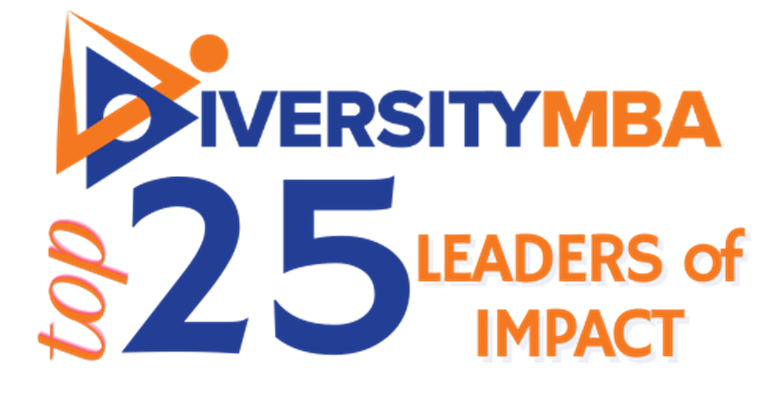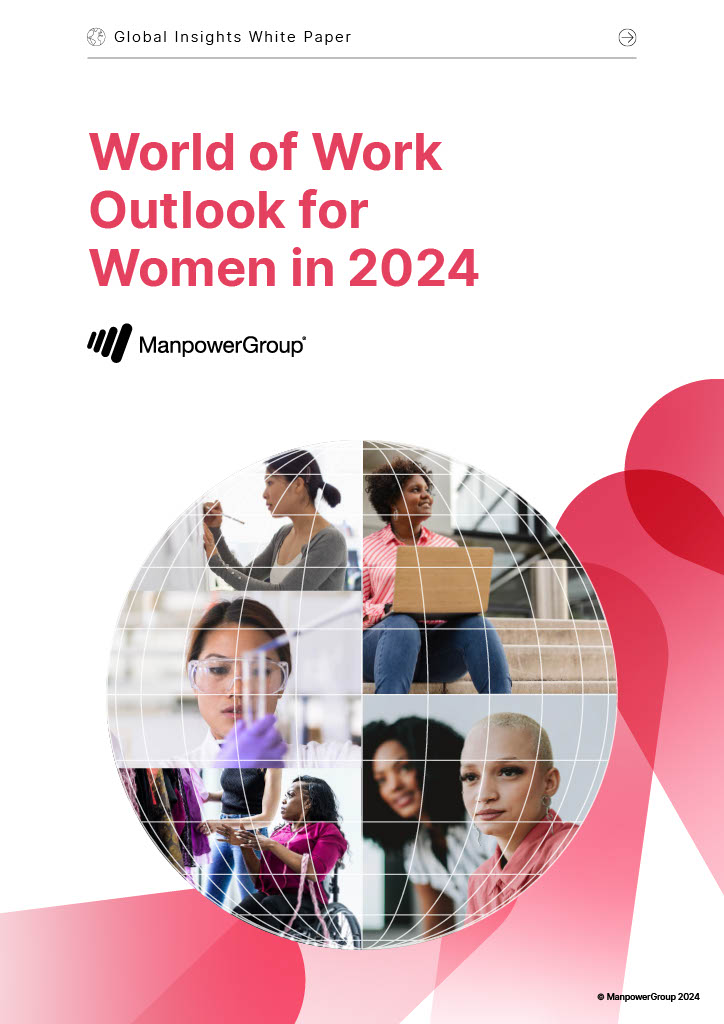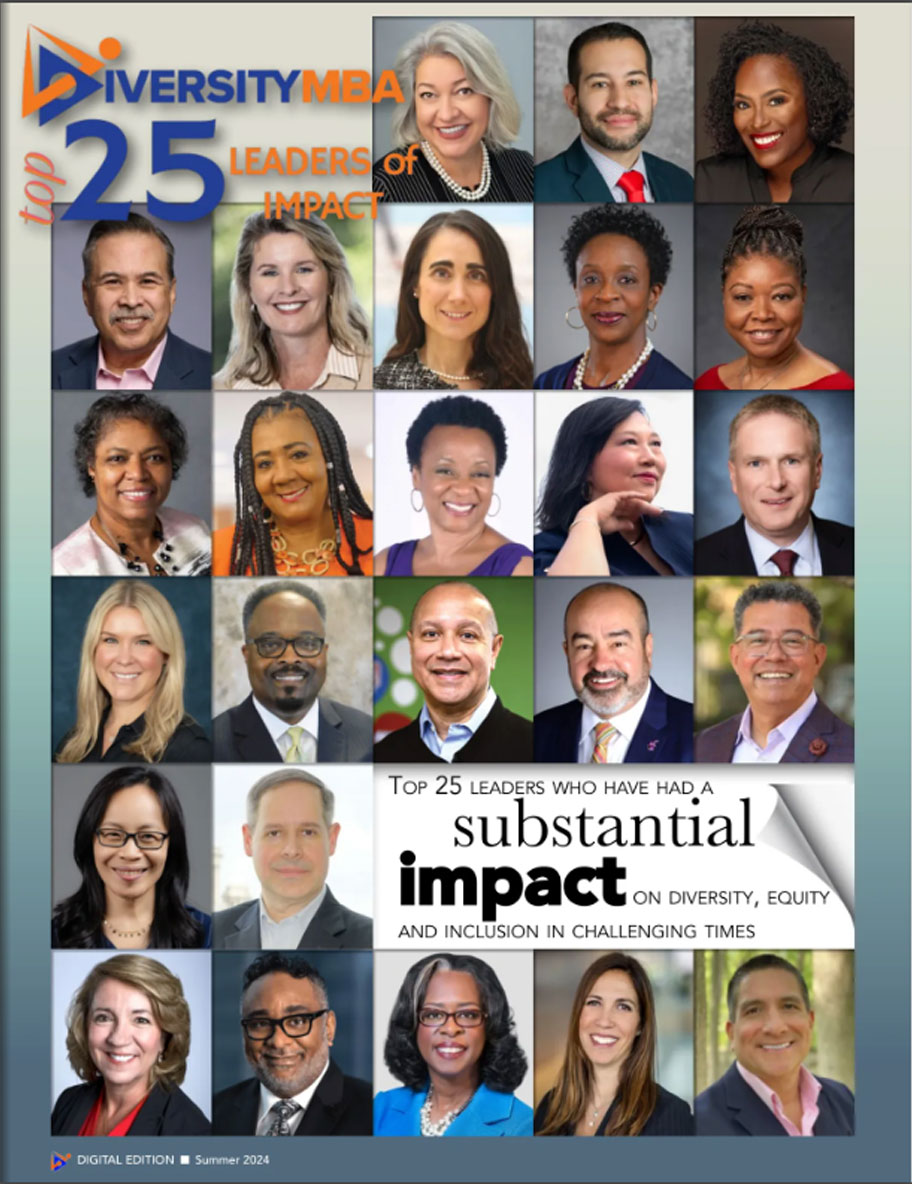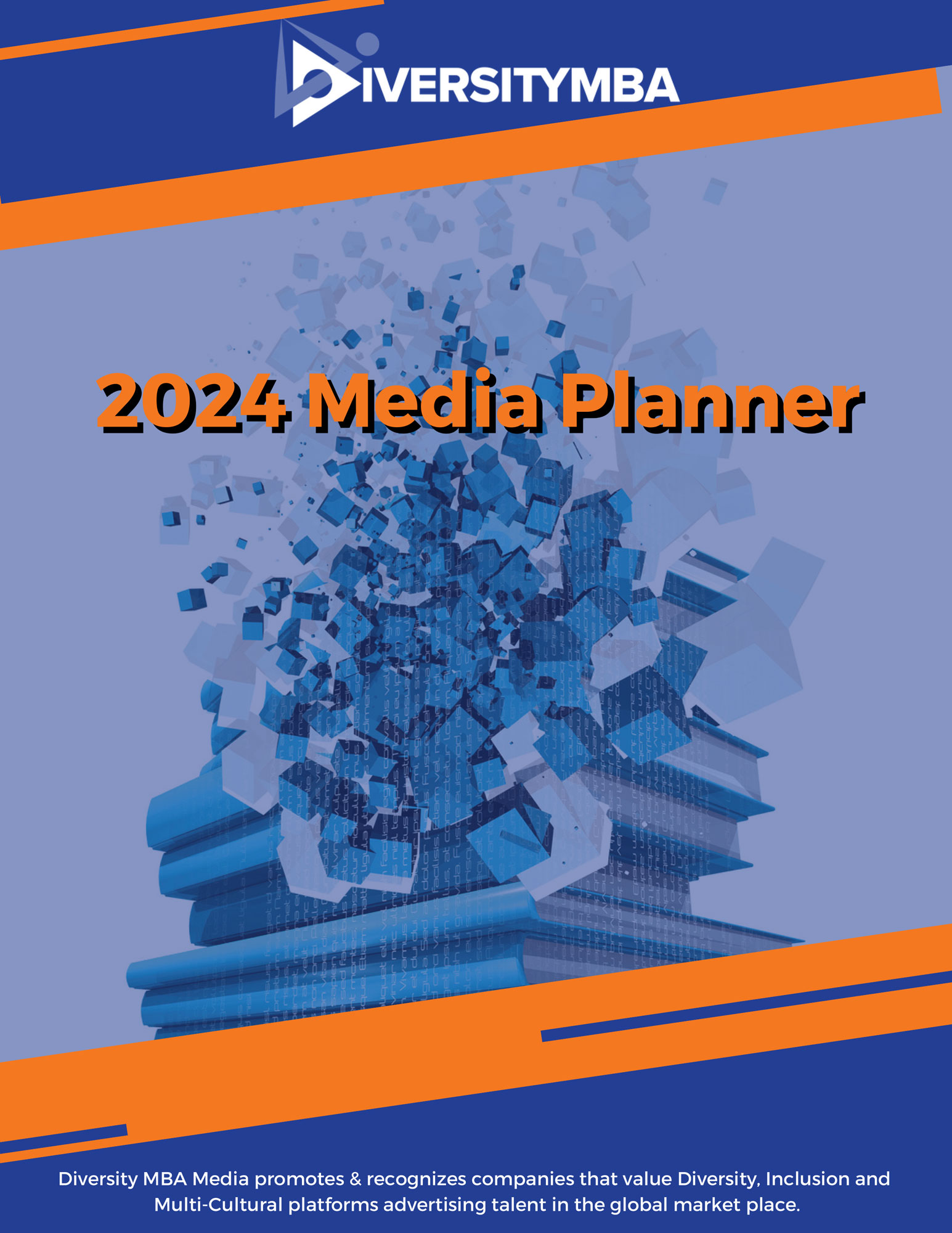Melinda Penny-Washington RDN, CDCES
Abstract
Chronic disease rates such as heart disease and diabetes are affecting Black and Indigenous People of Color (BIPOC) communities at a disproportionate rate. For instance, research conducted by the Centers for Disease Control and Prevention (CDC) has found that Black people between the ages of 18-49 are twice as likely to die of heart disease, and American Indians are twice as likely to develop diabetes than their White counterparts (CDC, 2017). Medical studies have cited systemic racism as one of the major causes of these health disparities. Systemic racism manifests in unethical methods and decisions in healthcare practices, biased algorithms used to predict the needs and care of patients; implicit racial biases of healthcare providers and their lack of cultural competence skills in treating BIPOC; and poor access to affordable healthcare by many BIPOC. These factors contribute to mistrust of the medical field among BIPOC, creating treatment resistance that further compounds the problem. This article illustrates how supporting the use of ancestral healing practices specific to the patient can serve as a viable model for treatment. The use of such practices increases trust between patient and healthcare provider and improves health outcomes in BIPOC communities. For the purpose of this paper, the terms “Black” and “African American” will be used interchangeably. .
Keywords: implicit bias, algorithm bias, chronic disease, BIPOC, racial inequality, racism, modern healthcare, ancestry, ancestral healing, indigenous healing, self-efficacy
Integrating Ancestry Healing Practice in the Clinical Model to Build Self-Efficacy in Chronic Disease Management for People of Color
Analysis
Systemic Racism and the History of Medical Research
American medical research is intertwined with the history of slavery. Enslaved Africans were often coerced or forced to undergo experiments that sacrificed the patient’s health and safety. Although these experiments advanced medical research, medical care, training enhancement, and increased wealth and the reputation for physicians, it was at the expense of enslaved Africans. This methodology continued long after slavery ended with experiments like the The Tuskegee Experiment, which lasted nearly forty years, from 1932-1972 (McVean, 2019). Doctors and clinicians promised hundreds of African American men free treatment for various illnesses, including syphilis, in exchange for their participation in this study. Researchers intentionally withheld treatment in order to track and study the full progression of the disease. As a result, participants experienced severe health problems including blindness, psychosis, and death.
Another example of a historically racist practice is the sterilization of thousands of women of color, including Puerto Ricans, Blacks, Latinx, and Native Americans (Torpy, 2000). The Planning Services Population Research Act of 1970 resulted in mass sterilization of BIPOC women. The purpose of this federal legislation was to make comprehensive family planning services available to low-income and underinsured families. However, sterilizations were often performed without the patient’s full knowledge of the surgical procedure or its physical and psychological ramifications.
Although steps have been taken toward enforcing consent around these procedures, recent studies document continued mistrust of the healthcare system among tribal communities (Guadagnolo et al., 2009). A systematic review cited mistrust as a major barrier to voluntary participation in clinical research studies among African Americans, Latinos, Asian Americans, and Pacific Islanders (George et al., 2014). In all four groups, the stated perception was that research will benefit Whites or the research institution rather than people of color. Another shared mistrust includes the perception that by signing an informed consent, the participant would relinquish legal rights and provide the researcher with legal protection against any harm that may be inflicted on the participant.
Recent Manifestation of Systemic Racism
Recently, a study found racial bias in a commercial algorithm used to predict the needs of ill patients who did not have the wherewithal to properly manage their care (Obermeyer et al., 2019). The algorithm used healthcare cost to measure the severity of illness and allocated money based on those needs. This mode of measurement did not account for the disparities in access to healthcare, unfairly resulting in lower spending on black patients than White patients. This oversight failed to take into account black patients with unmanaged complex and severe medical needs – patients who should be prioritized.
When treating COVID-19, dermatologists reported that despite consistent science indicating that COVID-19 virus affects people of color disproportionately, examples of black and brown skin with coronavirus skin disorders were difficult to find in medical journals (Rabin, 2020). Only 10 percent of images illustrated in dermatologic disease are of dark skin.
Implicit Bias and Health Disparities
Attitude and behaviors of clinicians and healthcare providers have been identified as one of many factors that contribute to health disparities (Hall et al., 2015). One systematic review showed levels of implicit bias against Black, Hispanics, and dark-skinned people were relatively similar across these groups. Implicit biases were related to patient–provider interactions, treatment decisions, treatment adherence, and patient health outcomes. The review reported that some White providers viewed African Americans as less intelligent, less able to adhere to treatment regimens, and more likely to engage in risky health behaviors than their White counterparts. Hispanic patients were viewed as unlikely to accept responsibility for their own care and more likely to be noncompliant with treatment recommendations. The biases were present among many healthcare providers across specialties, levels of training, and levels of experience.
Many studies over the past several decades have identified these defining features of systematic racism as contributing to health disparities in America. Although organizations such as the American Medical Association and the Center of Disease Control recently announced efforts to identify and address the impact of racism, there is no national health policy addressing system racism (AMA, 2020; CDC, 2022). Because racism permeates many areas of healthcare, multiple approaches will be needed to improve the current system. I encourage a patient-centered approach that recognizes the connection to ancestry in chronic disease treatment.
Considering Integration of Ancestral Healing in the Chronic Disease Treatment Model as a Solution
Often, people living with chronic diseases find it difficult to manage their self-care practices. This may be related to low self-efficacy or even an aversion to participating in their regiments (Chan, 2021). Given the BIOPIC community’s historical mistrust in the medical system, many of these patients feel skeptical about the medical provider’s methodology and outcomes.
A culturally relevant treatment plan that includes one’s ancestral healing practices into conventional medicine can be an effective way to build self-efficacy. By integrating recognizable cultural practices around food and dance for example, into necessary lifestyle changes as part of health self-care, patients gain agency in managing their chronic condition.
Self-efficacy in this context, refers to a person’s beliefs in their ability to influence events that positively affect their lives (Bandura, 1997). This allows the patient to take ownership of behavior changes in managing their medical condition using a trusted model of care.
The method people embrace to manage their chronic conditions can have a direct effect on self-management success. Encouraging the patient toward their own traditional and ancestral practices allows the patient the opportunity to “get back to their ancestral roots.” This also builds trust between patient and provider.
Perspective: My Personal Journey as a Study Integrating Ancestral Healing Practices
It was through my own journey as an African American woman in the healthcare system that I was able to understand the importance of cultural healing practices in addition to clinical treatment in managing my chronic condition of Irritable Bowel Syndrome (IBS). Although my medical providers performed many forms of diagnostic testing and prescribed medication, other contributors to IBS such as elevated levels of stress and lack of nutrition education were never addressed. As a result, I was rapidly losing weight and desperate to seek another way to heal. My level of self-efficacy in managing my condition was low.
I was very motivated to solve the issue when I discovered eastern mind-body practices from Indian and Chinese healing modalities. Cultural rituals around community and relationships helped me recognize my toxic work environment. I reflected on the experience of the first-generation immigrants I grew up with and recalled the rituals involving food and movement . I witnessed successful indigenous healing practices in those cultures that energized me to take the lead on my own health using ancestry.
I became a Registered Dietitian to gain evidenced-based understanding of food as medicine. As a result, I created an integrated treatment model for myself using meditation, plant-based foods and medicinal herbs within the Western framework. I later became a student of indigenous healing practices in the U.S. and abroad. These practices contribute to effective management of conditions like heart disease, depression, anxiety, and cancer. I went to become certified in indigenous healing to better incorporate these modalities into my practice as a dietitian for BIPOC patients.
As a Registered Dietitian and advocate, I call this approach, the Ancestral Wisdom Health Model, that is based on my ten years of education, training and experience studying indigenous health practices of Africa, North and South America, and the Pacific Islands.
The Ancestral Wisdom Health Model uses a four-pillar health framework to create healthy habits for patients and to support the management of chronic conditions.
The Ancestral Wisdom Health Model
The Ancestral Wisdom Health Model’s four pillars are: Food as Medicine, Practicing Rituals, Nature Therapy, and Belonging. As a clinician, I integrate the four pillars using evidence-based science in the treatment plan of patients. Motivational interviewing and coaching techniques are utilized to identify relevant health practices of one’s own culture.
Food as Medicine. Before pharmaceuticals, our ancestors used plants to heal. Fruit, roots, and herbs provided both healing benefits and culinary pleasure. In the clinical field, this plant-based, whole food diet can be culturally relevant to the patient. Some examples are the DASH diet for people living with heart disease or carb counting techniques for people living with diabetes (NHLBI, 2021). These examples of nutrition therapy can be presented in a culturally resonant way, honoring the traditional healing dishes from the patient’s background. Participants are guided to explore vegetables, fruits, grains, and lean sources of protein that are unique to self-identified cultural dishes.
Cultivating Cultural Rituals Around Eating, Movement, and Play. Rituals are regular set actions that are done consistently. Intentional eating with others can be a healthy ritual. Evidence shows a reduction in the risk of chronic diseases in children who participate in family meals (Harrison et al., 2015). Participants are guided in using evidenced-based intervention called mindful eating practice during mealtime (Harvard University, 2022). Some mindful eating practices include turning off all device screens to minimize distractions and eating in a clean and organized environment with family members or friends. Practicing gratitude for the food is one aspect of mindful eating. Awareness of how food is experienced by tapping into the five body senses of touch, taste, smell, sound, and sight, is another illustration of the practice.
In many cultures this looks like setting the table with decorations, plateware and flowers, saying blessings over the food, and sharing praises (or critiques) on the food as a way of engaging all the senses and building connections with the community.
Participants are also encouraged to identify culturally relevant rituals around movement and play which may include tai-chi, yoga, line-dancing, or Salsa (NHLBI, 2021). Another example explores the art of breakdancing as a cultural connection to healing. This dance style is partially derived from South African indigenous movements and has become a trendy pastime on the streets of urban cities across the Americas.
Nature Therapy. Emerging evidence shows spending time in nature is connected to improvement in cognitive and mental health and has been shown to positively affect some chronic diseases. The science of nature or Psychology of Ecosystem and Forest Bathing are used to motivate participants to return to nature with the goal of promoting well-being and movement (Bratman, 2019; Yau, 2020). Nature therapy can also be used as a form of stress relief to mitigate chronic disease risk factors and help patients avoid the use of harmful stress management habits, such as smoking and drinking.
Belonging: The Importance of Community and Reciprocity. This pillar focuses on the importance of belonging and acting in the cause of something “bigger than ourselves” by using the indegious concept of reciprocity. Reciprocity, the practice of exchanging with others for mutual benefit, is the basis for relationships in many ancestral wisdom cultures. Each person whether, a youth, adult, or elder, has a vital role in the community. Understanding this role increases the feeling of belonging. Feelings of belonging and inclusion increase health outcomes (Begen, 2014). Using motivational interviewing, participants are directed in identifying cultural communities of interest that may include religious or social groups dedicated to preserving practices and traditions of specific ancestry. Participants also explore their ideal role in community and the balance of reciprocity in this role as it relates to stress management and wellbeing.
The Importance of Healing in Community
The Center for Disease Control recently named racism as a serious threat to the public’s health resulting in health inequities of people of color (CDC, 2021). Those within these populations are at greater risk of poor health outcomes.
Having grasped a solid understanding of the powerful healing effects of community healing, I became a Racial Healing Circle Facilitator through the Association of American Colleges and Universities Truth, Racial Healing & Transformation initiative, housed by the University of California, Davis. In addition, I participated in the Nonviolence365® training through the King Center Institute (AAC&U, 2021; The King Institute, 2022; Ton, 2021). Although healing circles are rooted in indigenous practices, modern studies are now pointing to the health benefits of this practice in Western medicine (Jordan, 2014). The study suggested that the act of deep listening and offering words of validation often helped with conditions associated with managing chronic disease.
With this knowledge and understanding, I implemented and co-facilitated racial healing circles for BIPOC. The goal of the sessions is to offer a safe environment to process pain and to mitigate harmful forms of stress management like alcohol or tobacco consumption, replacing them with healthier habits and rituals.
Outcome of Culturally Relevant Intervention Case Study
One case study involved a first-generation, pregnant, South Asian woman living with gestational diabetes mellitus (GDM) and preeclampsia. She worried about the possibility of having a miscarriage due to her inability to adhere to the doctor’s recommendations. She was told to take the medication as prescribed and reduce rice and bread intake, which were staples in her diet. She felt her doctor did not consider her cultural background in recommending a treatment plan to lower her blood sugars. I encouraged her to explore the traditional foods her ancestors ate in India. We discussed the plant-based meals her Hindu mother made for her as a child. She recalled rituals of eating as a family at the table without the distraction of electronic devices or screens. She often experienced a shared Hindu spiritual practice of meditation in her backyard garden with her family. Together we were able to recreate and implement some of these practices using the four pillars of health and medical nutrition therapy to reduce the risk of her unborn baby’s exposure to the mother’s elevated blood sugars.
Along with medication, she was able to implement the recommended evidenced-based meal plan to treat GDM using food from her Middle Eastern tradition. Shifting her mindless ritual of eating in front of the TV, to now eating at her dinner table without a TV screen allowed her to gauge when she was satiated, which led to improvements in blood sugars. She implemented meditation in her garden to help with elevated blood pressure related to stress. She also began volunteering in her religious community, giving her a sense of belonging and inclusion, which contributed to her sense of well-being. As a result, she was able to reduce her hemoglobin A1C from a severely unhealthy range to a healthy range over the course of six months, and her child was born full-term without major health complications. The patient found that it was relatively easy to adjust to the healthy behavior changes around diet and exercise, because these features related to her cultural practices and personal beliefs, which were already ingrained. Six months after the pregnancy, she reported maintaining the health practices she reclaimed during her pregnancy, and her medical condition remains well managed.
Recommendations
There are three factors to consider when implementing the ancestral wisdom approach in building self-efficacy in disease management.
Factor 1. First, the clinician shall participate in training to address racial bias, cultural sensitivity, and cultural humility to understand the connection between racism and health. The goal of such training is to educate the clinician on unconscious bias in order to become a better-sensitized health advocate on behalf of underrepresented patients of the BIPOC culture.
Factor 2. The second factor is motivational interviewing and health coach training, preparing the health provider to better guide the patient in building self-efficacy. In doing so, the provider identifies and utilizes the patient’s unique cultural context around healing. New research has shown that certified coaches trained in evidence-based mental health and motivational interviewing are effective in supporting behavioral change to promote treatment adherence (Bischof, 2021; Psychology Today, 2022). Once healing practices are identified, healthcare providers can assist the patient in setting attainable goals towards implementing healthy behavioral changes.
Factor 3. The third factor is to create an intake questionnaire around cultural practices that include ethnic demographics. This enables providers to help build patient self-efficacy, improve health outcomes, and sustain behavior changes with better results than with conventional methods alone.
When designing and integrating the ancestral wisdom program with the standard clinical treatment plan, clinicians shall seek reputable resources, such as Diversity, Equity, and Inclusions consulting firms, which are instrumental in supporting the cultural framework. One example is Diversity MBA– diversitymbamagazine.com.
Although a holistic approach was used in designing the Ancestral Wisdom Health Model, some aspects of the model presented in this article may not be relevant or applicable to the cultural beliefs of all BIPOC. Future research is needed to assess the success of the model on building self-efficacy in chronic disease management in this population.
Conclusion
This approach recognizes the benefits of cultural wellness practices in chronic disease treatment. Harnessed effectively, these considerations can not just help BIPOC patients, but address the mental and emotional conditions that contribute to chronic disease across the nation. As the American population becomes increasingly diverse, implementing these simple methods could change the course of patients’ lives and help to reduce the health outcome disparities in these communities. This applies not just to patients experiencing chronic conditions, but also to prevention. The Ancestral Wisdom Health Model is one viable step healthcare providers and public health policy-makers can take on behalf of BIPOC communities to support the effort to correct generations of systemic racism in public health.
References
AAC&U News. (2021, December 9). AAC&U’s Truth, Racial Healing & Transformation (TRHT) Campus Centers Initiative Reaches Key Milestone with Launch of New Centers. AAC&U.com. Retrieved September 2, 2022, from https://www.aacu.org/newsroom/aac-us-truth-racial-healing-transformation-trht-campus-centers-initiative-reaches-key-milestone-with-launch-of-new-centers.
Altman, M. (2022, July 12). New research finds coaching to be on par with therapy. Psychology Today. Retrieved September 2, 2022, from https://www-psychologytoday-com.cdn.ampproject.org/c/s/www.psychologytoday.com/us/blog/evidence-based-care/202207/new-research-finds-coaching-be-par-therapy?amp
American Medical Association. (2020, November 16). New Ama policy recognizes racism as a public health threat. American Medical Association. Retrieved September 2, 2022, from https://www.ama-assn.org/press-center/press-releases/new-ama-policy-recognizes-racism-public-health-threat
Bandura, A., Freeman, W. H., & Lightsey, R. (1997). Self-efficacy: The exercise of Control. Journal of Cognitive Psychotherapy, 13(2), 158–166. https://doi.org/10.1891/0889-8391.13.2.158
Begen, F.M., Turner-Cobb, J.M. (2014). Benefits of belonging: experimental manipulation of social inclusion to enhance psychological and physiological health parameters. Psychol Health. 2015;30(5):568-82. doi: 10.1080/08870446.2014.991734. Epub 2014 Dec 22. PMID: 25420618.
Bischof, G., Bischof, A., & Rumpf, H. J. (2021). Motivational Interviewing: An Evidence-Based Approach for Use in Medical Practice. Deutsches Arzteblatt international, 118(7), 109–115. https://doi.org/10.3238/arztebl.m2021.0014
Bratman, G. N., Anderson, C. B., Berman, M. G., Cochran, B., de Vries, S., Flanders, J., Folke, C., Frumkin, H., Gross, J. J., Hartig, T., Kahn, P. H., Kuo, M., Lawler, J. J., Levin, P. S., Lindahl, T., Meyer-Lindenberg, A., Mitchell, R., Ouyang, Z., Roe, J., … Daily, G. C. (2019). Nature and mental health: An ecosystem service perspective. Science Advances, 5(7). https://doi.org/10.1126/sciadv.aax0903
Centers for Disease Control and Prevention. (2017). African American Health. Atlanta, GA; Vital Signs.
Centers for Disease Control and Prevention. (2017, January 10). Native Americans with Diabetes. Centers for Disease Control and Prevention. Retrieved September 2, 2022, from https://www.cdc.gov/vitalsigns/aian-diabetes/index.html
Centers for Disease Control and Prevention. (2021, November 24). Racism and health. Centers for Disease Control and Prevention. Retrieved September 2, 2022, from https://www.cdc.gov/healthequity/racism-disparities/index.html
Centers for Disease Control and Prevention. (2022, June 6). CDC’s efforts to address racism as a fundamental driver of health disparities. Centers for Disease Control and Prevention. Retrieved September 2, 2022, from https://www.cdc.gov/healthequity/racism-disparities/cdc-efforts.html
Chan S. W. (2021). Chronic Disease Management, Self-Efficacy and Quality of Life. The journal of nursing research : JNR, 29(1), e129. https://doi.org/10.1097/JNR.0000000000000422
George, S., Duran, N., Norris, K. “A Systematic Review of Barriers and Facilitators to Minority Research Participation Among African Americans, Latinos, Asian Americans, and Pacific Islanders”, American Journal of Public Health 104, no. 2 (February 1, 2014): pp. e16-e31.
Guadagnolo, B. A., Cina, K., Helbig, P., Molloy, K., Reiner, M., Cook, E. F., & Petereit, D. G. (2009). Medical mistrust and less satisfaction with health care among Native Americans presenting for cancer treatment. Journal of health care for the poor and underserved, 20(1), 210–226. https://doi.org/10.1353/hpu.0.0108
Hall, W. J., Chapman, M. V., Lee, K. M., Merino, Y. M., Thomas, T. W., Payne, B. K., Eng, E., Day, S. H., & Coyne-Beasley, T. (2015). Implicit Racial/Ethnic Bias Among Health Care Professionals and Its Influence on Health Care Outcomes: A Systematic Review. American journal of public health, 105(12), e60–e76. https://doi.org/10.2105/AJPH.2015.302903
Harrison, M. E., Norris, M. L., Obeid, N., Fu, M., Weinstangel, H., & Sampson, M. (2015). Systematic review of the effects of family meal frequency on psychosocial outcomes in youth. Canadian family physician Medecin de famille canadien, 61(2), e96–e106.
Harvard University. (2022, March 11). Mindful eating. The Nutrition Source. Retrieved September 2, 2022, from https://www.hsph.harvard.edu/nutritionsource/mindful-eating/
Jordan, M. (2014). Healing circles: an ethnographic study of the interactions among health and healing practitioners from multiple disciplines. Global advances in health and medicine, 3(4), 9–13. https://doi.org/10.7453/gahmj.2014.035
The King Center Institute. (2022, February 18). Retrieved September 2, 2022, from https://thekingcenterinstitute.org/
McVean, A. (2019, January 25). 40 years of human experimentation in America: The tuskegee study. Office for Science and Society. Retrieved September 2, 2022, from https://www.mcgill.ca/oss/article/history/40-years-human-experimentation-america-tuskegee-study
National Heart Lung and Blood Institute. (2021, December 29). Dash Eating Plan. National Heart Lung and Blood Institute. Retrieved September 2, 2022, from https://www.nhlbi.nih.gov/education/dash-eating-plan
National Heart Lung and Blood Institute. (2022, March 24). Physical Activity and Your Heart. National Heart Lung and Blood Institute. Retrieved September 2, 2022, from https://www.nhlbi.nih.gov/health/heart/physical-activity
Obermeyer, Z., Powers, B., Vogeli, C., & Mullainathan, S. (2019). Dissecting racial bias in an algorithm used to manage the health of populations. Science (New York, N.Y.), 366(6464), 447-453. Report #: ARTN aax2342. http://dx.doi.org/10.1126/science.aax2342 Retrieved from https://escholarship.org/uc/item/6h92v832
Rabin, R. C. (2020, August 30). Dermatology has a problem with Skin color. The New York Times. Retrieved September 2, 2022, from https://www.nytimes.com/2020/08/30/health/skin-diseases-black-hispanic.html
Smith, T. M. (2021, June 15). AMA guidelines offer path to prevent discrimination in medicine. American Medical Association. Retrieved September 2, 2022, from https://www.ama-assn.org/delivering-care/health-equity/ama-guidelines-offer-path-prevent-discrimination-medicine
Ton, H. (2021, May 27). For Your Information: News and Updates from the Office of the Vice Chancellor for Diversity, Equity, and Inclusion. UC Davis. Retrieved September 2, 2022.
Torpy, S. J. (2000). Native American women and coerced sterilization: On the trail of tears in the 1970s. American Indian Culture and Research Journal, 24(2), 1–22. https://doi.org/10.17953/aicr.24.2.7646013460646042
Yau, K. K.-Y., & Loke, A. Y. (2020). Effects of forest bathing on pre-hypertensive and hypertensive adults: A review of the literature. Environmental Health and Preventive Medicine, 25(1). https://doi.org/10.1186/s12199-020-00856-7








